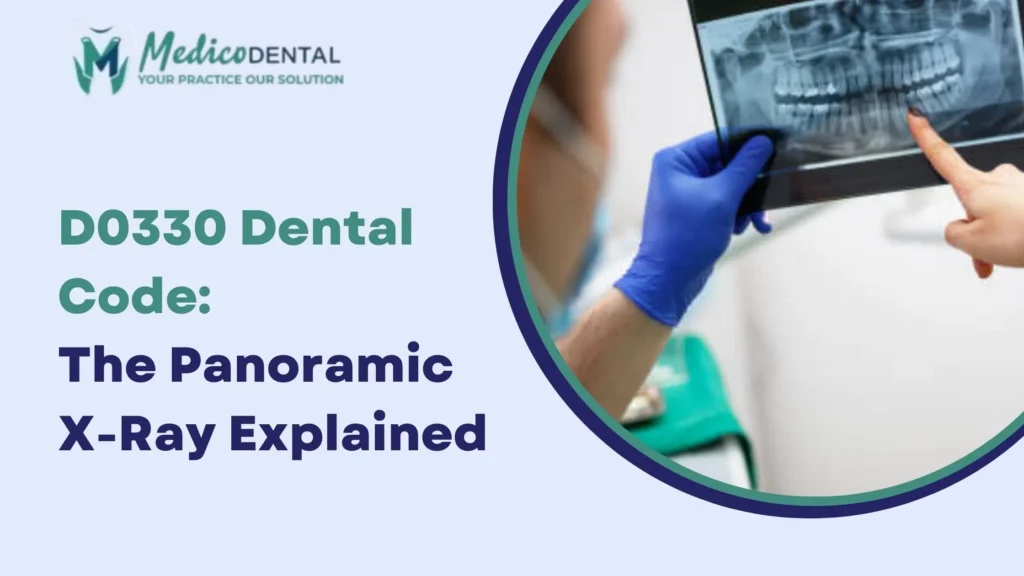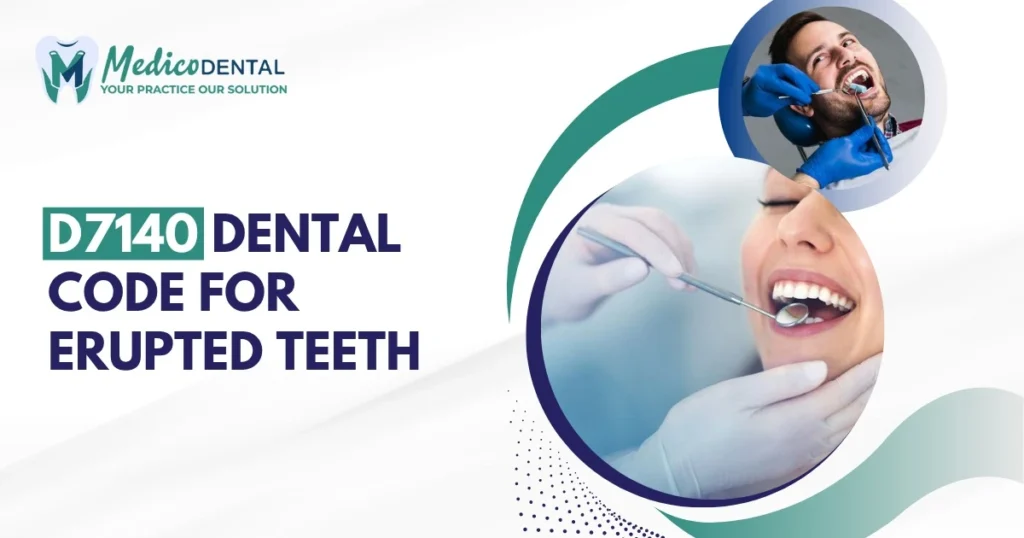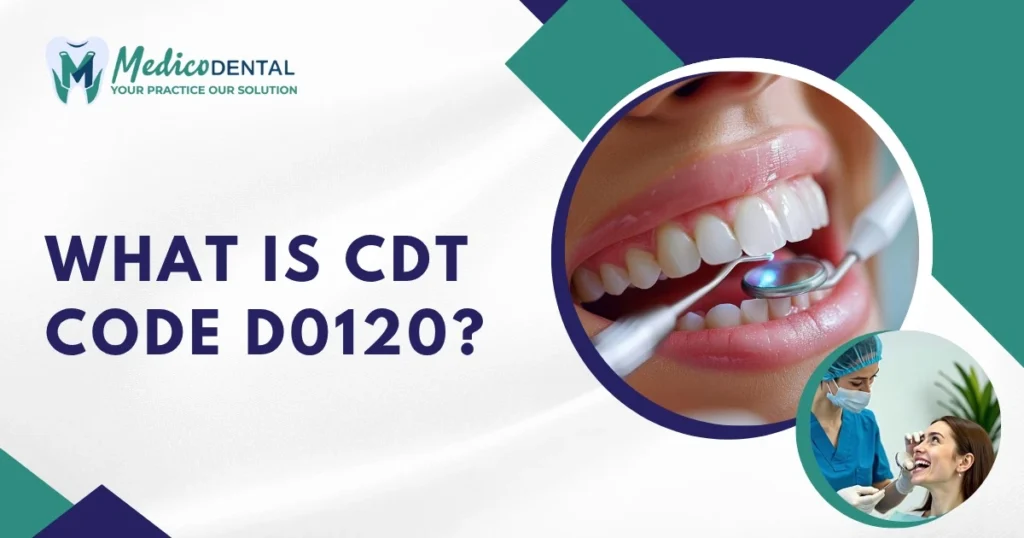D0330 Dental code refers to a panoramic radiographic image, also known as a panoramic X ray. This diagnostic procedure provides a complete view of the patient’s entire mouth in one single image, including all the teeth in both the upper and lower jaws, as well as the surrounding bones, joints, and sinuses.
Unlike small, focused dental X rays that show just a few teeth at a time, the panoramic image captures the entire dental structure in one continuous shot. Dentists often use this code when they need to evaluate the overall condition of the mouth, detect issues that may not be visible during a regular exam, or plan treatments such as orthodontics, implants, or extractions.
In simpler terms, D0330 is used when your dentist takes a wide, full mouth X ray to get a complete picture of your oral health. This image helps identify tooth positioning, jaw alignment, bone health, cysts, tumors, infections, or impacted teeth all without the need for multiple smaller X rays.
So, when you see D0330 on your dental bill, it means your dentist performed a panoramic X ray to get a comprehensive view of your mouth for accurate diagnosis and better treatment planning.
Overview of the Panoramic Radiograph
Dental Code D0330 represents a panoramic radiographic image, an extraoral X ray that provides a full circle view of the patient’s mouth and jaw. Unlike intraoral X rays where the sensor or film is placed inside the mouth the panoramic machine rotates around the patient’s head, producing a detailed two dimensional image of the entire Oral and Maxillofacial Surgeon structure.
This imaging method is commonly used to evaluate the alignment of teeth, the position of unerupted or impacted teeth, jawbone integrity, and the condition of sinuses. It’s also invaluable for dentists to detect early signs of disease or abnormalities that would otherwise be difficult to visualize with standard bitewing or periapical radiographs.
Purpose of the Procedure
The main goal of performing a panoramic radiograph is to provide a comprehensive view for diagnostic and treatment purposes. The D0330 procedure assists dental professionals in:
- Identifying impacted teeth, such as wisdom teeth.
- Detecting jaw tumors, cysts, and bone irregularities.
- Evaluating tooth and bone structure before dental implants or orthodontic treatment.
- Monitoring growth and development in children and adolescents.
- Assessing trauma or fractures in the facial bones.
By using this code, dental practices ensure that the panoramic image is properly documented and billed according to ADA (American Dental Association) guidelines.
What D0330 Covers
Complete Mouth Coverage in One Image
The panoramic radiograph offers a single, unified image of the entire oral cavity, which includes:
- Both the upper (maxilla) and lower (mandible) jaws
- Temporomandibular joints (TMJ)
- Nasal and sinus areas
- Tooth roots and surrounding bone structure
This wide ranging view helps the dentist evaluate multiple aspects of oral health in one image without exposing the patient to multiple X rays. It’s particularly effective for detecting issues across large areas that intraoral X rays might miss.
Extraoral Imaging Technique
Unlike traditional intraoral X rays, where sensors are placed inside the patient’s mouth, the D0330 panoramic procedure is performed externally. The X ray unit rotates around the patient’s head while the image receptor captures the entire mouth in a single motion.
This extraoral method is more comfortable for patients especially those with sensitive gag reflexes, limited mouth opening, or anxiety during intraoral imaging. It also provides a better view of deeper structures like jawbones, sinuses, and joint areas.
Key Features of the Panoramic X Ray
The panoramic radiographic image is valued for its ability to:
- Provide comprehensive anatomical detail in a single image.
- Offer low radiation exposure compared to taking multiple intraoral X rays.
- Capture both dental and skeletal structures simultaneously.
- Serve as an essential baseline record for long term dental monitoring.
These features make D0330 a versatile diagnostic tool that supports preventive, restorative, and surgical dental care.
When to Use Code D0330
Diagnostic Applications
Dentists use D0330 when they need a complete view of the mouth to detect hidden or complex oral health issues. This includes diagnosing:
- Jaw cysts, abscesses, and tumors
- Bone loss due to periodontal disease
- Fractures or trauma in the facial bones
- Impacted or missing teeth
- Sinus complications that affect dental structures
Panoramic images often serve as the first diagnostic step before moving into more targeted imaging like cone beam CT (CBCT).
Treatment and Surgical Planning
The panoramic X ray is also a cornerstone in treatment planning. It provides dentists and oral surgeons with essential structural insights before performing procedures such as:
- Wisdom tooth extractions
- Dental implant placement
- Orthognathic (jaw) surgery
- Full mouth restorations
- Orthodontic treatments
Using D0330 helps ensure precision and safety during surgical or restorative procedures by showing how teeth, roots, and bone structures relate to each other.
TMJ and Jaw Assessments
Temporomandibular joint disorders (TMJ) can cause pain, limited jaw movement, and bite problems. A panoramic X ray allows clinicians to visualize the TMJ area for signs of misalignment, bone degeneration, or trauma. While it may not show soft tissue details, it provides crucial baseline information that helps determine if further imaging (like MRI or CBCT) is needed.
Growth and Development Monitoring
For pediatric and adolescent patients, D0330 plays an important role in tracking dental and skeletal development. It helps identify:
- Abnormal tooth eruption patterns
- Missing or extra teeth
- Jaw growth discrepancies
- Orthodontic needs early on
This proactive approach enables timely intervention, ensuring proper alignment and healthy development of the teeth and jaws.
Clinical Importance of Panoramic Radiographs
Detecting Oral Diseases Early
Early detection is vital in maintaining oral health. A panoramic X ray provides a wide field of view that helps identify hidden infections, cysts, bone loss, and oral lesions. Because the entire mouth is visible, dentists can catch issues before they become severe, reducing the need for costly and invasive treatments later.
Evaluating Impacted Teeth and Bone Structure
One of the most common reasons to order a D0330 image is to evaluate impacted teeth especially third molars (wisdom teeth). The panoramic radiograph shows the exact position of the impacted tooth in relation to nerves and sinuses, guiding safe extraction procedures. It also helps assess bone density and jaw structure, which is crucial for implant placement and orthodontic planning.
Supporting Orthodontic and Implant Procedures
Orthodontists and implant specialists rely on panoramic X rays to design precise and safe treatment plans. The D0330 image gives them a full understanding of the jaw relationships, tooth spacing, and bone health necessary for braces, aligners, or implants. It also allows continuous monitoring of changes throughout the course of treatment.
Dental Billing and Coding Guidelines for D0330
Accurate dental billing and coding play a vital role in ensuring timely reimbursement and compliance with insurance requirements. The D0330 code represents a panoramic radiographic image, and using it correctly prevents claim denials and delays. Understanding proper documentation, CDT coding standards, and common billing errors can make a significant difference for dental offices.
Proper Documentation and Reporting
For a successful claim, documentation must clearly support the medical necessity of performing a panoramic X-ray. Dentists should record:
- The reason for the procedure, such as suspected pathology, evaluation for wisdom teeth, or orthodontic planning.
- Clinical notes or findings that justify why a panoramic image was required.
- The date of service and the provider’s signature.
When submitting claims, attach relevant documentation if the payer requests proof of necessity. Proper charting ensures that your office complies with insurance regulations and ADA standards while also safeguarding against audits or denials.
ADA CDT Code Description and Usage
The American Dental Association (ADA) defines CDT Code D0330 as:
Panoramic radiographic image , a single image of the entire mouth, including teeth, upper and lower jaws, and surrounding structures.
This description emphasizes that D0330 covers a full extraoral panoramic image, not multiple intraoral films.
Key usage guidelines include:
- Bill D0330 only when a full-mouth extraoral image is taken, not for sectional or bitewing X-rays.
- The image should be diagnostic in nature and used for evaluation or treatment planning.
- Ensure your imaging system and software are compliant with ADA and HIPAA standards for image storage and transmission.
Common Billing Errors to Avoid
Mistakes in dental billing can lead to claim rejections or reimbursement delays. Common errors with D0330 include:
- Using the wrong code (e.g., D0210 instead of D0330).
- Failing to document the reason for the panoramic X-ray.
- Billing for D0330 along with D0210 on the same date of service (most payers only allow one comprehensive radiographic image per visit).
- Incorrect patient frequency submitting D0330 more often than the insurer allows.
To prevent these issues, train your billing team to verify each patient’s insurance policy, coverage frequency, and documentation requirements before submission.
Reimbursement and Coverage Considerations
Insurance coverage for dental radiographs, including panoramic images, varies by payer and policy. Understanding how insurers evaluate medical necessity, frequency limits, and claim requirements can help maximize reimbursement and minimize denials.
Insurance Coverage for D0330
Most dental insurance plans cover D0330 when it’s deemed medically necessary meaning it’s performed for diagnostic or treatment-related purposes. Common scenarios where coverage applies include:
- Evaluation of wisdom teeth or impacted teeth
- Pre-surgical assessment for dental implants
- Orthodontic evaluations
- Detection of cysts, tumors, or bone abnormalities
However, coverage rules differ by insurer. Some plans include panoramic X-rays under preventive or diagnostic services, while others classify them separately with limited frequency (for example, once every 3 or 5 years). Always verify coverage with the insurer before performing the procedure.
Frequency Limitations and Medical Necessity
Insurance companies typically restrict the frequency of panoramic X-rays to prevent unnecessary radiation exposure and costs. Common limitations include:
- Once every 36 to 60 months for routine exams
- Additional coverage allowed only when medically necessary (e.g., trauma, surgery planning, or pathology investigation)
If the panoramic X-ray is performed outside of standard intervals, documentation must clearly justify medical necessity such as evidence of infection, bone loss, or pre-surgical evaluation. Supporting records like clinical notes, prior X-rays, and diagnostic reports can strengthen claim approval.
Tips to Ensure Successful Claim Approval
To avoid denials and ensure smooth processing:
- Verify patient eligibility and frequency limits before billing.
- Use the correct CDT code (D0330) and avoid pairing it with overlapping codes.
- Attach diagnostic notes when submitting for non-routine or medical-necessity cases.
- Stay updated with payer-specific policies, as each insurer may have different guidelines.
- Work with experienced dental billers who understand CDT coding and insurer nuances.
Consistent adherence to these steps ensures timely reimbursements and compliance with payer requirements.
Difference Between D0330 and Other Radiographic Codes
Understanding how D0330 differs from other CDT codes helps providers bill accurately and select the right imaging technique for each patient’s diagnostic needs.
D0330 vs. D0210 (Comprehensive Intraoral Series)
- D0330 (Panoramic Image):
Captures the entire mouth in a single extraoral image, including both jaws, sinuses, and TMJ.
- D0210 (Intraoral Comprehensive Series):
Involves multiple intraoral X-rays typically 14 to 22 images showing individual teeth and surrounding structures.
Key Difference:
D0330 provides a broad overview of the entire mouth and bone structure, while D0210 focuses on detailed tooth-level images. They serve different purposes, and most insurers won’t pay for both on the same day unless medically justified.
When to Use Panoramic vs. Intraoral Imaging
Use panoramic imaging (D0330) when a full overview is needed, such as:
- Assessing jaw alignment and bone structure
- Identifying impacted or missing teeth
- Planning for surgery or orthodontics
Use intraoral imaging (D0210 or bitewings) when you need:
- Detailed views of individual teeth
- Detection of cavities, root issues, or localized bone loss
Selecting the correct code ensures accurate billing and clear diagnostic purpose documentation.
Cross-Referencing with Other CDT Codes
D0330 can be cross-referenced with other dental imaging codes depending on the clinical need:
- D0320 – TMJ Radiographic Series
- D0340 – Cephalometric Radiographic Image
- D0364–D0367 – Cone Beam CT (Limited/Full View)
Each of these codes covers specific imaging purposes. Cross-referencing ensures proper documentation and billing alignment for comprehensive diagnosis and treatment planning.
Best Practices for Dental Providers
Following best practices not only enhances diagnostic accuracy but also ensures compliance with ADA and insurance guidelines.
Ensuring Accurate Code Usage
Always verify that the procedure performed matches the code billed. Train staff to identify when a panoramic image is appropriate and confirm payer guidelines before submission. Regular audits of coding and documentation help prevent claim denials.
Enhancing Diagnostic Accuracy with Panoramic Imaging
Dentists should use D0330 as part of a comprehensive diagnostic strategy. The panoramic image helps identify problems early, supports treatment planning, and provides a visual record of the patient’s oral health. Integrating this imaging with digital records also improves long-term care coordination.
Partnering with Professional Dental Billing Experts
Outsourcing to experienced dental billing services ensures accurate coding, timely claims, and compliance with insurance standards. Professional billers understand CDT updates, payer policies, and denial management helping dental practices maintain healthy cash flow and focus on patient care.
Conclusion
The Value of Panoramic Radiographs in Modern Dentistry
Panoramic X-rays have become an indispensable part of dental care. They provide a complete view of the oral and facial structures, enabling early detection, precise treatment planning, and better patient outcomes.
Importance of Accurate Coding for D0330
Accurate documentation and coding of D0330 protect your practice from claim denials, ensure compliance, and optimize reimbursement. By following ADA guidelines and payer requirements, dental professionals can maintain both clinical and financial integrity delivering the best possible care to patients while keeping their revenue cycle strong.



